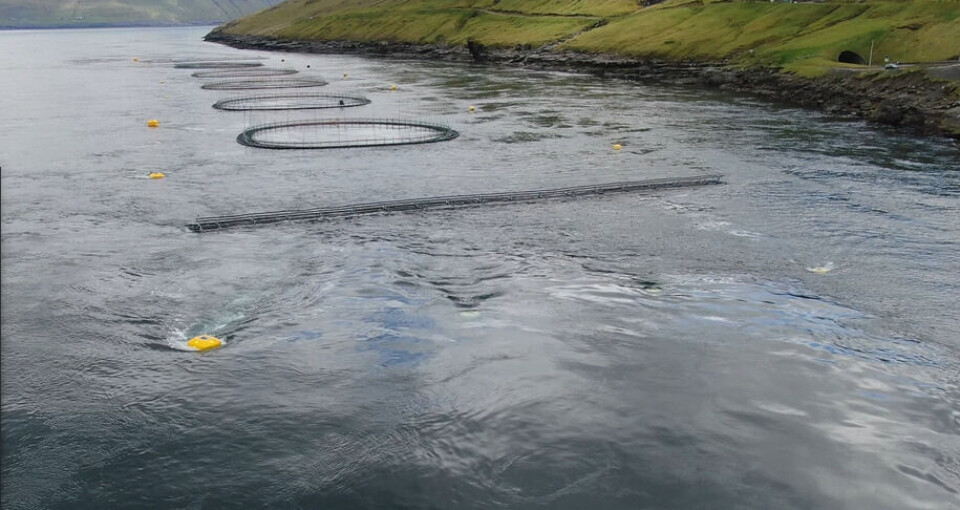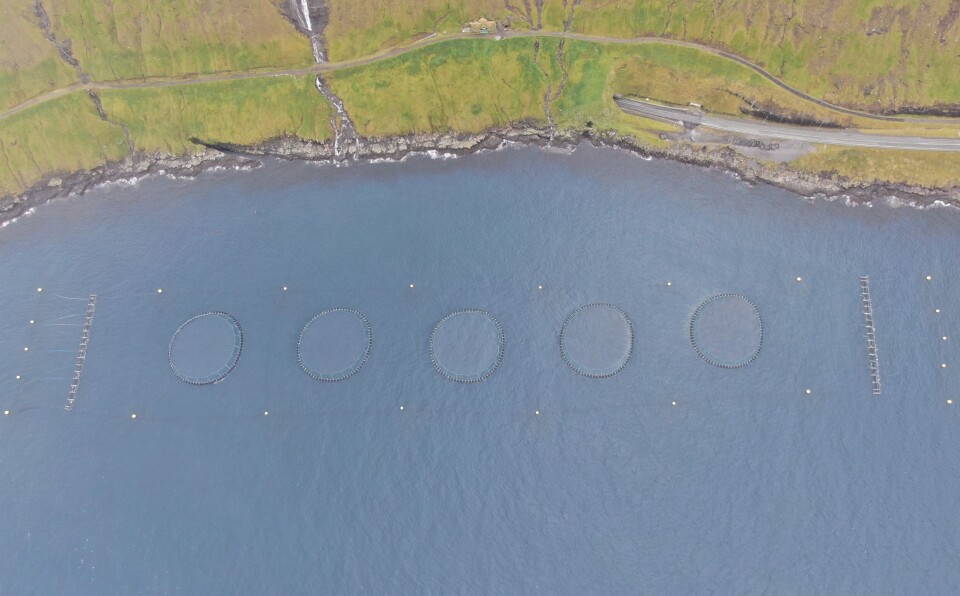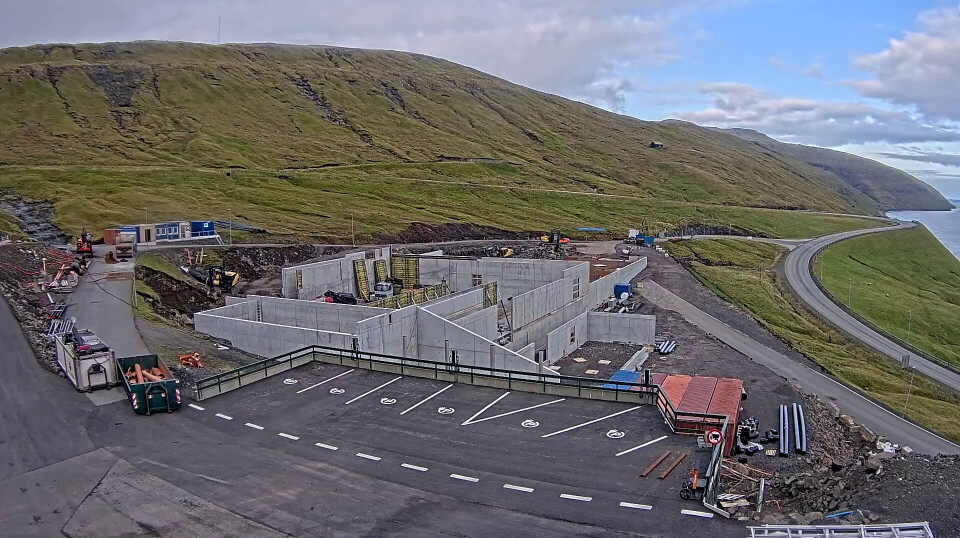
Salmon farmer tames current to open new site
Hiddenfjord is using nets anchored at each end of a line of pens to reduce water flow to a level acceptable for fish
Atli Gregersen has long wanted to farm fish in the Vestmannasund Strait between the islands of Streymoy and Vagar in the Faroes, but the current was considered too strong. That problem has now been overcome with the help of an ocean engineering expert.
Gregersen, chief executive and co-owner of the Faroes’ second largest salmon farmer, Hiddenfjord, and his team have worked with Øystein Patursson, of aquaculture and ocean engineering company RAO ÍVF, to devise a solution.
They are using nets attached to both sides of the moorings for a straight row of five pens at the site.
There are two nets, one at each end of the row, and each net is mounted on a large specially designed float that lies on the surface of the water.

Four knots
The tidal current at the site can be as fast as four knots, and by using the nets Hiddenfjord has reduced the current passing through the pens to two knots, which Gregersen points out is the strongest current the fish can stand to swim in over a sustained period.
“We have wanted to produce at this location for a long time, and finally got the opportunity. The Faroe Islands have no restrictions on maximum standing biomass as long as the biological conditions are good, so there are great opportunities here,” he told Fish Farming Expert’s Norwegian sister site, Kyst.no.
It has taken four years to get to this point.
“In 2019, work began with current measurements, modelling and design, and in 2021 the test nets were launched, before we launched on a large scale in the summer of 2022,” explained Gregersen.
He noted that the company worked for a long time to be able to find a satisfactory way to attach the nets to the bottom, and was satisfied with the result in the spring of 2023 when fish were stocked into the cages.
Exposed location
“We are starting the first production now, and things are going quite well. But we see that the currents are a bit stronger for the salmon that are at the far end of the cages than we originally calculated, so this is something we will work on optimising even more in the next production cycle. We are very pleased to start production at yet another exposed location in the Faroe Islands”, says Gregersen.
Hiddenfjord has permission to produce in the entire Vestmannasund Strait, and Gregersen says there must be a distance of five kilometres between the sites. After each harvest at sites in the Faroe Islands, there is a mandatory fallowing period of two months before operations can be restarted.
“We have plans for more facilities here eventually, so that we have more flexibility it comes to stocking and harvesting our salmon, not least having the opportunity to be able to sell fish all year round,” he said.
800-gram smolts
The new site is not the only development for Hiddenfjord, which is also investing around £22 million do expand the tank volume of its smolt facility at Fútakletti by a third, from 18,000 cubic metres to 24,000m³.
“We already have a fairly large hatchery, but as we want to increase the size of the fish we release, we are now expanding the facility even more,” Gregersen told Kyst.no.
“We decided in 2010 to try to shorten the time in the sea per generation as much as possible. Before, we had the salmon in the localities for approximately 22 months, and in recent years we have shortened the time at sea to less than 14 months and have a mortality rate of less than 5%. The goal going forward is 11 months at sea with fish of 800 grams.”

Next year Hiddenfjord will stock around 3.5 to 4 million smolt of around 800 grams. This is fewer fish than would be stocked if they were grown to 600 grams. By reducing the number of fish but increasing the size, Gregersen believes that the company will be able to continue producing around 18,000 gutted weight tonnes of salmon annually.
Less risk
“We want to be able to produce the same, but we reduce the risk and improve the biology of the fish. It is not so susceptible to salmon lice, and we believe this is the way to go,” he said.
“Our focus is less risk for the fish in the sea and we want to focus on safe and secure production. Our ambition is to have the most sustainable production possible, and we put this first in everything we do both on land and at sea. We have a low mortality rate and are below average, but it is always possible to improve.”
Gregersen believes that mortality is a clear indicator of whether a farmer is doing things right or not.
Safest possible production
“Producing salmon with high mortality is not sustainable salmon production and not the way we want to do things. We want the fish to be the best possible and to have the safest possible production with the lowest possible mortality at all times,” he said.
Hiddenfjord has already stocked some 800-gram smolts, but won’t be able to stock all its sites with fish of that size until the hatchery extension is completed next year.
“We are very much looking forward to next autumn when we can really put an extra gear into the big smolt we put out. We know that shorter time at sea means fewer biological challenges, and that gives us more continuous and safe production,” he concluded.





















































